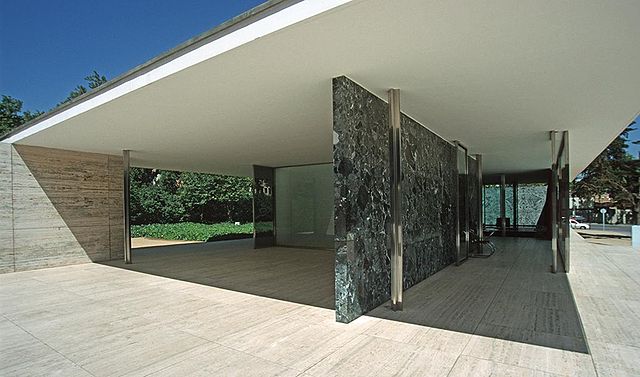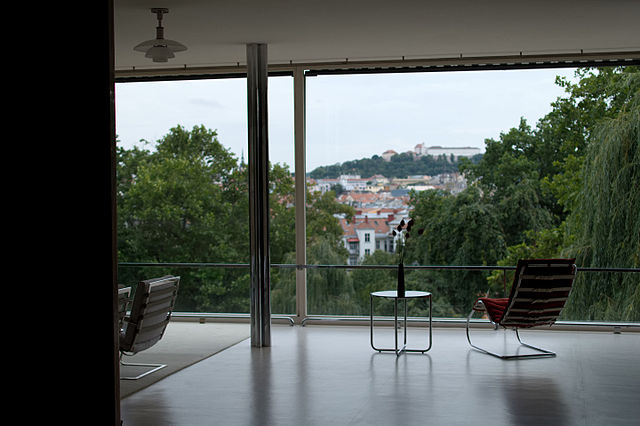The Barcelona Pavilion, designed by Ludwig Mies van der Rohe and Lilly Reich, was the German Pavilion for the 1929 International Exposition in Barcelona, Spain. This building was used for the official opening of the German section of the exhibition. It is an important building in the history of modern architecture, known for its simple form and its spectacular use of extravagant materials, such as marble, red onyx and travertine. Furnishings specifically designed for the building, including the Barcelona chair, are still in production. It has inspired many important modernist buildings. The original structure was demolished in 1930, and the existing reconstruction was completed in 1986.
Barcelona Pavilion
Barcelona Pavilion (reconstruction)
View towards annex showing cantilevered roof-slabs
Another view showing annex and large reflecting pool
Ludwig Mies van der Rohe was a German-American architect, academic, and interior designer. He was commonly referred to as Mies, his surname. He is regarded as one of the pioneers of modern architecture.
Ludwig Mies van der Rohe
Patio of Villa Wolf, built in 1926 in Guben (now Gubin in Poland) for Erich and Elisabeth Wolf. The villa was destroyed in the aftermath of World War II, and there are joint German-Polish plans for its reconstruction.
Barcelona Pavilion in Barcelona, constructed in 1929 for the world exposition. Never intended to be permanent, it was demolished in 1930 as was typically done for exhibition structures, but it was re-erected in 1986 by a team of local architects.
Villa Tugendhat built in 1930 in Brno for Fritz Tugendhat







